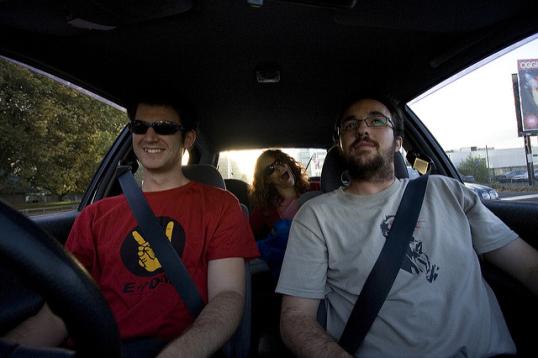- Topic
- Mobility management
- Urban mobility planning
- Country
- Romania
- Resource type
- Case study
Implementation of the CHUMS measures started in the industrial area of Craiova West following a history of carpooling projects that have been implemented in collaboration with RAT Craiova (local transportation company).
Moreover, the organisations involved have previously been involved in CIVITAS projects, with objectives focused upon transport and urban mobility. The CHUMS project has developed and is delivering a unique methodology (‘the CHUMS approach’) to unlock maximum carpooling demand and establish a critical mass of users. It does so in workplaces by delivering three sequential activities, each one reinforcing staff awareness, participation and a modal shift to carpooling.
CHUMS approach:
- Step 1: Deliver a carpooling week to increase awareness and eagerness of staff to try out carpooling, and learn of the associated cost savings. Database of registered staff is set up.
- Step 2: Provide Personalised Travel Planning (PTP) services to employees highlighting again the carpooling options. Studies in the UK show PTP can reduce single occupancy trips by 11 per cent
- Step 3: Set up a 'Mobility Jackpot' competition, where one employee each week or month that carpools is awarded a prize which is then communicated across the workplace. Financial incentives have been shown to eliminate up to 20 per cent of daily vehicle trips in the US.
After the businesses were identified within the specific industrial area, significant efforts were put in to gain management support. In order to ensure suitable buy-in from the organisations, the company executives were approached and presented with an overview of the measures, plus the expected benefits. Decision makers at all levels were consulted and they too discussed the measures with the employees – this ensured that there was sufficient backing from across the organisation.
Context
The target group for the implementation of CHUMS consisted of three companies totalling 250 public sector and 600 private sector employees. In the second year of CHUMS, the University of Craiova was also added to the target of CHUMS with its 10 000 students and staff.
In action
The three measures of the CHUMS approach were implemented in two phases, one in 2015 and another in 2016. These awareness-raising efforts were accompanied by support materials: flyers, posters, key rings, t-shirts, pens, TV and radio spots. Employees were expected in institutions’ car parks before work, after work and in the break between shifts. During these times, face-to-face presentations regarding the project took place, employees were subsequently handed flyers and promotional materials with information and logos for CHUMS and Carpooling.
The businesses themselves were entrusted with selecting the winners of the Mobility Jackpot. They were believed to have the most reliable information on whether individuals were sharing or not. The numbers of prizes awarded were defined by the number of employees within the organisation. The rationale behind this was to make the fairest use of the resources available. Six jackpot draws were held after the first Carpool Week and three after the 2016 Carpool Week. As the University was involved in the CHUMS project later than the other companies, a proportional number of prizes was kept to be awarded at future lotteries at the university. Discussions were held face-to-face with employees of the respective organisations to gain the relevant information needed to deliver the PTP. Once the information was gathered the PTPs were then developed. After the PTP was prepared, meetings were arranged to discuss the travel options available to the individual.
Results
- Total number of carpoolers: 4 192 (Industrial areas: 2 058, Students and staff: 2 134 | Male: 2 481, Female: 1 711)
- Total number of matching - carpooling groups: 1 521 consisting of two, three or four people. People can change their default group.
- Total number of PTP: 5 103. 4 211 online and 892 at desk.
- Driven km saved: 16 200 km/day.
- Trip medium length: 6.2 km.
Challenges, opportunities and transferability
Lessons learned:
- Local administration policy and commitment is crucial
- Include support measures into the Sustainable Urban Mobility Plan (parking associated with carpooling measures/system).
- Visit at the companies, present the carpooling system, hold bilateral discussions with executives
- Present best practices, examples, focusing on the benefits of carpooling
- Use social media
- It is more efficient to split the awards in several packages and keep the people in a permanent interest for the jackpot lottery.
In Depth
Image copyright: carpooling II (image on Flickr) by "Darren Wood", licensed under CC BY-NC-ND 2.0.
This case study has been prepared for the European Commission however it reflects the views only of the authors, and the European Commission is not liable for any consequence stemming from the reuse of this publication.

